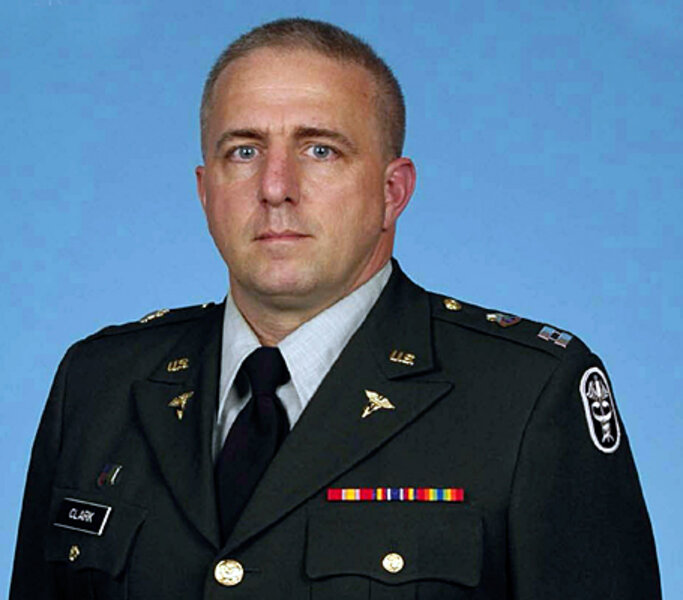Mystery death on Skype: What killed US captain in Afghanistan?
It is a mystery gripping the US military: What caused a US soldier at a base in Afghanistan to die during a video chat with his wife?
Capt. Bruce Kevin Clark was speaking via Skype with his wife Susan Oreliana-Clark on May 1 when he was “suddenly knocked forward,” according to statement released by his wife on Sunday.
“There was no sign that CPT Clark was in any discomfort, nor did he indicate any alarm,” her statement noted.
Yet she did notice a disturbing detail after her husband collapsed forward out of the view of the computer’s video camera: “The closet behind him had a bullet hole in it.”
Oreliana-Clark promptly called family members and tried to reach military officials as the Skype chat feed continued and her husband did not respond to her voice.
“The Skype link continued for approximately two hours as CPT Clark’s family and friends stateside and in theater worked feverishly to send help.”
After two hours, military officials and Mrs. Clark say, two military personnel arrived in Clark’s room in Afghanistan “and appeared to check his pulse,” according to the Clark family statement.
His wife, who had been working “feverishly” to reach military officials, was “provided no details about his condition” by the troops who arrived on the scene.
The US Army Criminal Investigation Command released its own statement Monday morning expressing condolences to the family, which has gone public with their plight, but offering few details in Clark’s death.
“We know this is a very traumatic and difficult time for all involved,” the statement read.
Military spokesman were adamant, however, that Clark’s death was not caused by a bullet. “Although the investigation into his death is open and ongoing by Special Agents from the US Army Criminal Investigation Command, we can positively say that Captain Clark was not shot,” wrote Chris Grey, spokesperson for the US Army Criminal Investigation Command.
What’s more, US military agents involved in the investigation have “found no trauma to the body beyond minor abrasions and a possible broken nose most likely caused from Captain Clark striking his face on his desk when he collapsed,” according to Grey.
Clark, a chief nurse serving at a small base southwest of Kabul in Tarin Kot, joined the military in 2006. He deployed to Afghanistan in March from the William Beaumont Army Medical Center in El Paso, Texas.
At present, Grey says that US military officials “do not suspect foul play” at this point in the investigation, “although we have not completely ruled it out.”





